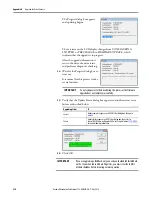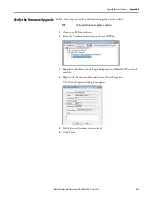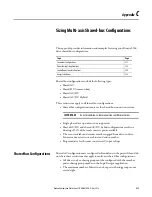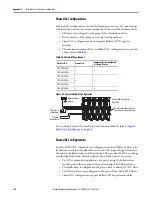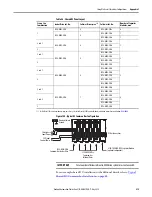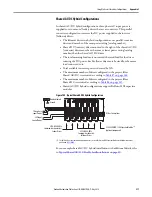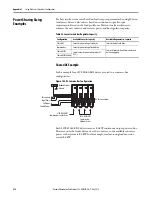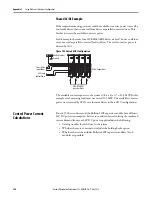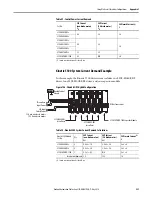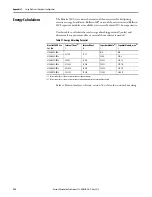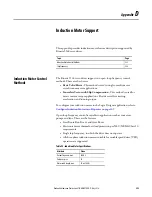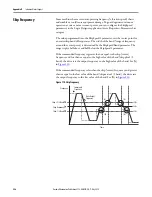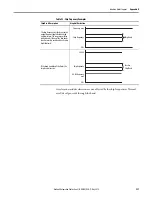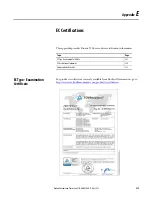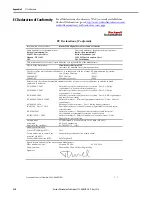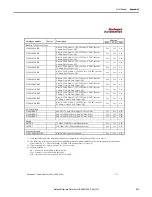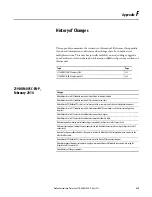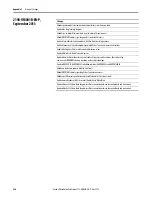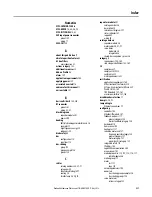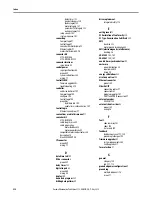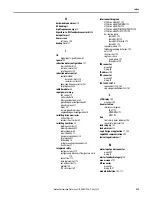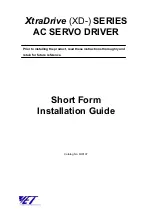
224
Rockwell Automation Publication 2198-UM001D-EN-P - May 2014
Appendix D
Induction Motor Support
Basic Volts/Hertz
Volts/hertz operation creates a fixed relationship between output voltage and
output frequency. Voltage is applied to the motor, based on the operating
frequency command at a fixed volts/hertz ratio. The ratio is calculated from the
motor nameplate data and entered into the Logix Designer application>
Axis Properties>Frequency Control category.
The Basic Volts/Hertz method provides a variety of patterns. The default
configuration is a straight line from zero to rated voltage and frequency. As seen
in the diagram below, the volts/hertz ratio can be changed to provide increased
torque performance when required by programming five distinct points on the
curve:
• Start Boost
- Used to create additional torque for breakaway from zero
speed and acceleration of heavy loads at lower speeds.
• Run Boost
- Used to create additional running torque at low speeds. The
value is typically less than the required acceleration torque. The drive
lowers the boost voltage to this level when running at low speeds (not
accelerating). This reduces excess motor heating that could result if the
higher start/accel boost level were used.
• Break Voltage/Frequency
- Used to increase the slope of the lower
portion of the Volts/hertz curve, providing additional torque.
• Motor Nameplate Voltage/Frequency
- sets the upper portion of the
curve to match the motor design. Marks the beginning of the constant
power region.
• Maximum Voltage/Frequency
- Slopes the portion of the curve used
above base speed.
Figure 107 - Basic Volts/Hertz Method
Frequency,
max
Base Frequency,
(nameplate)
Break Voltage
Start/Accel Boost
Run Boost
Base Voltage
(nameplate)
Voltage, max
Break
Frequency

